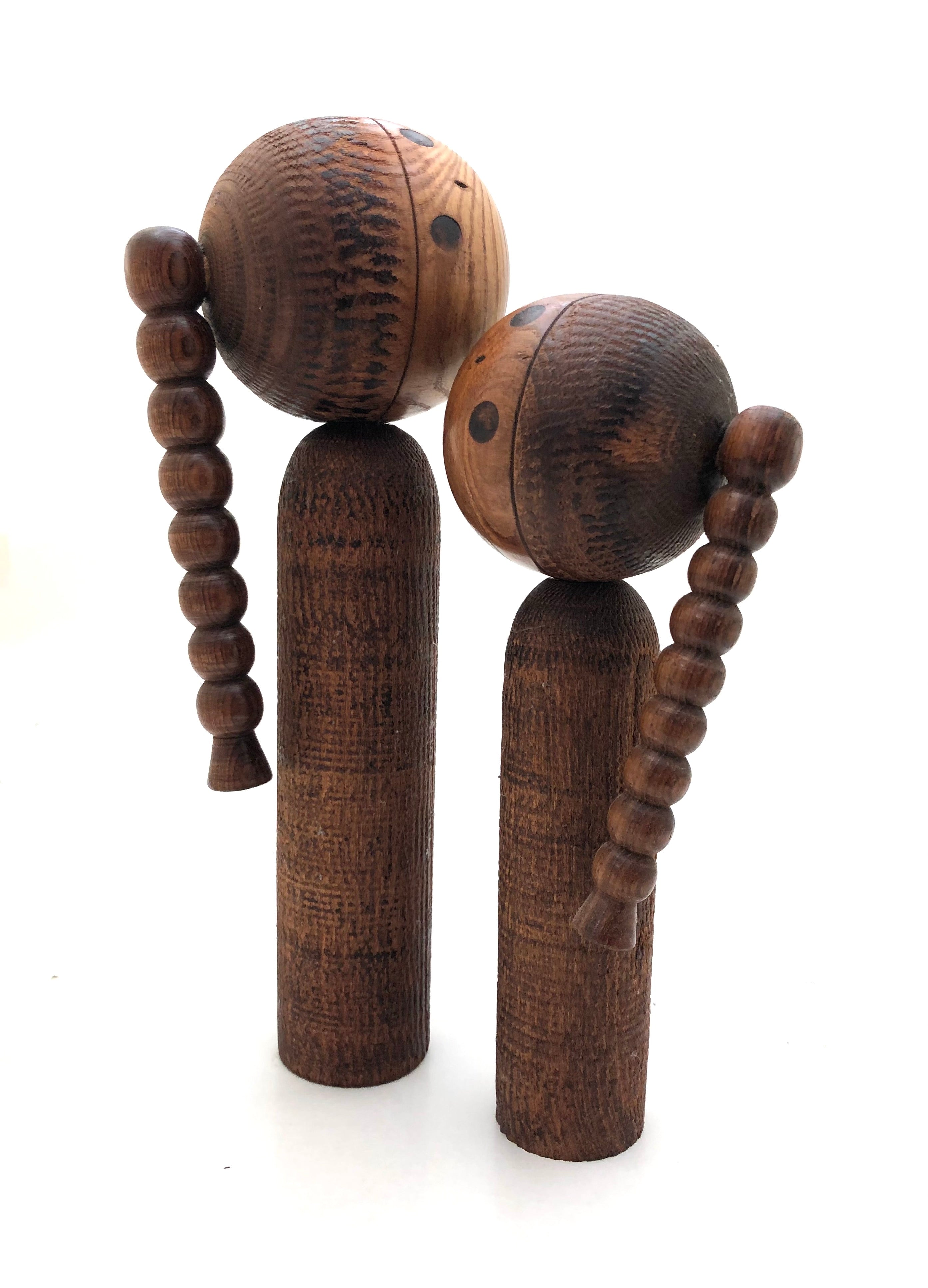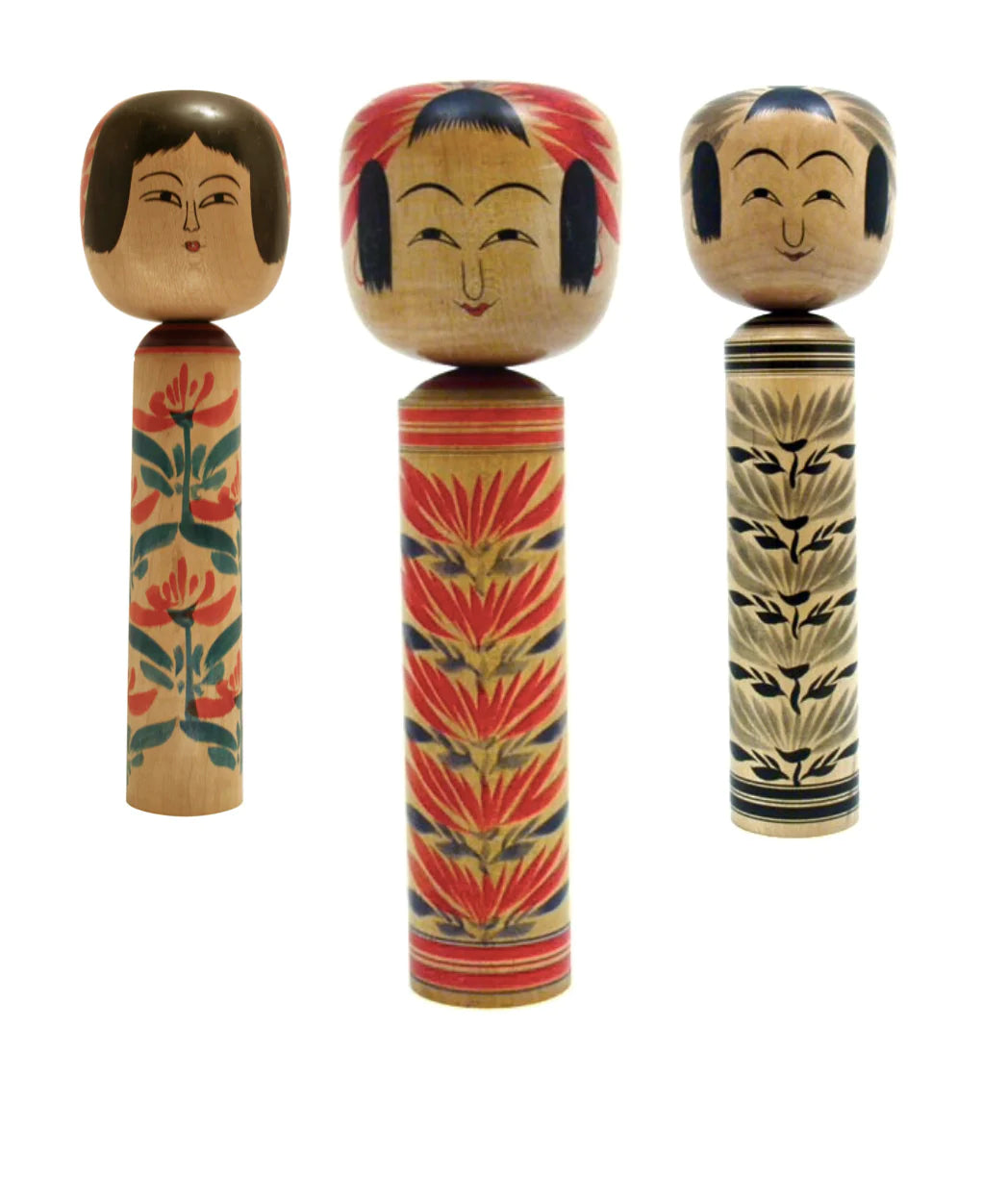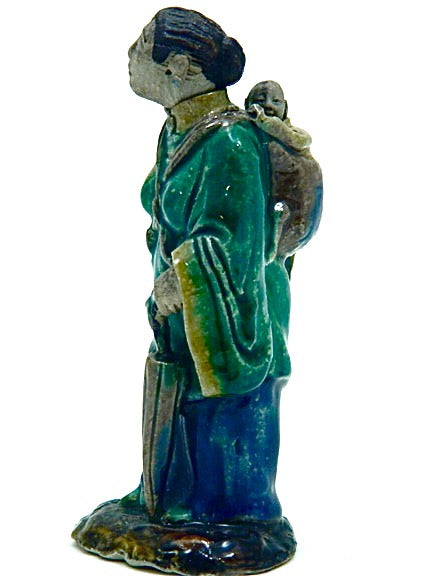
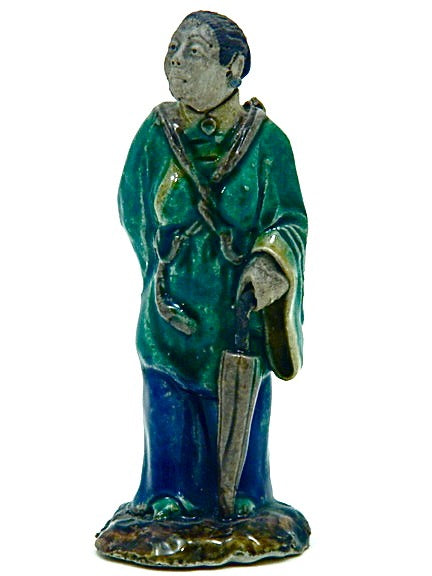
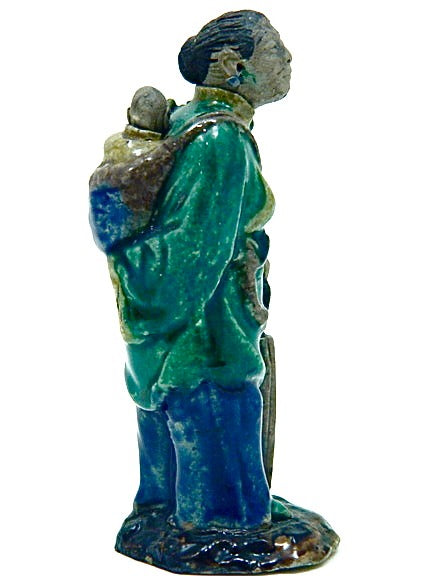
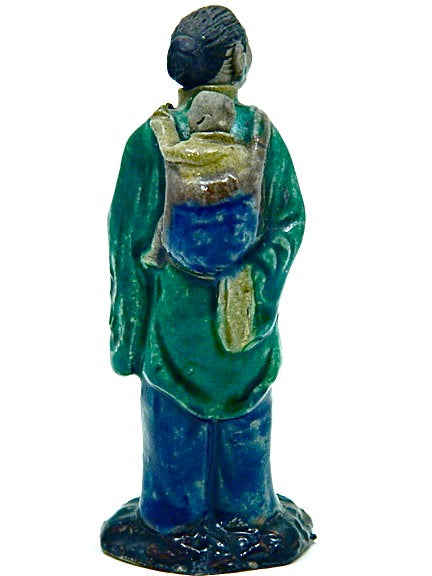
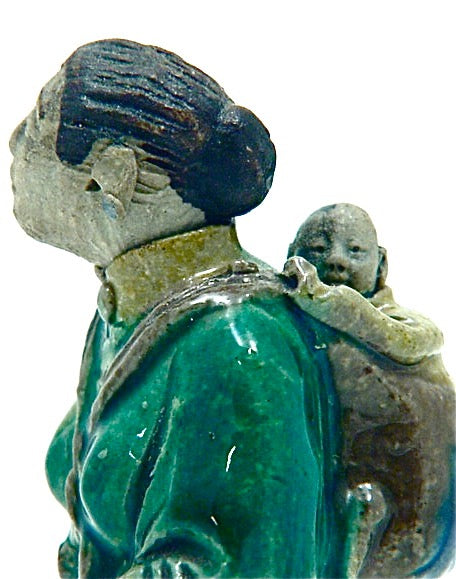
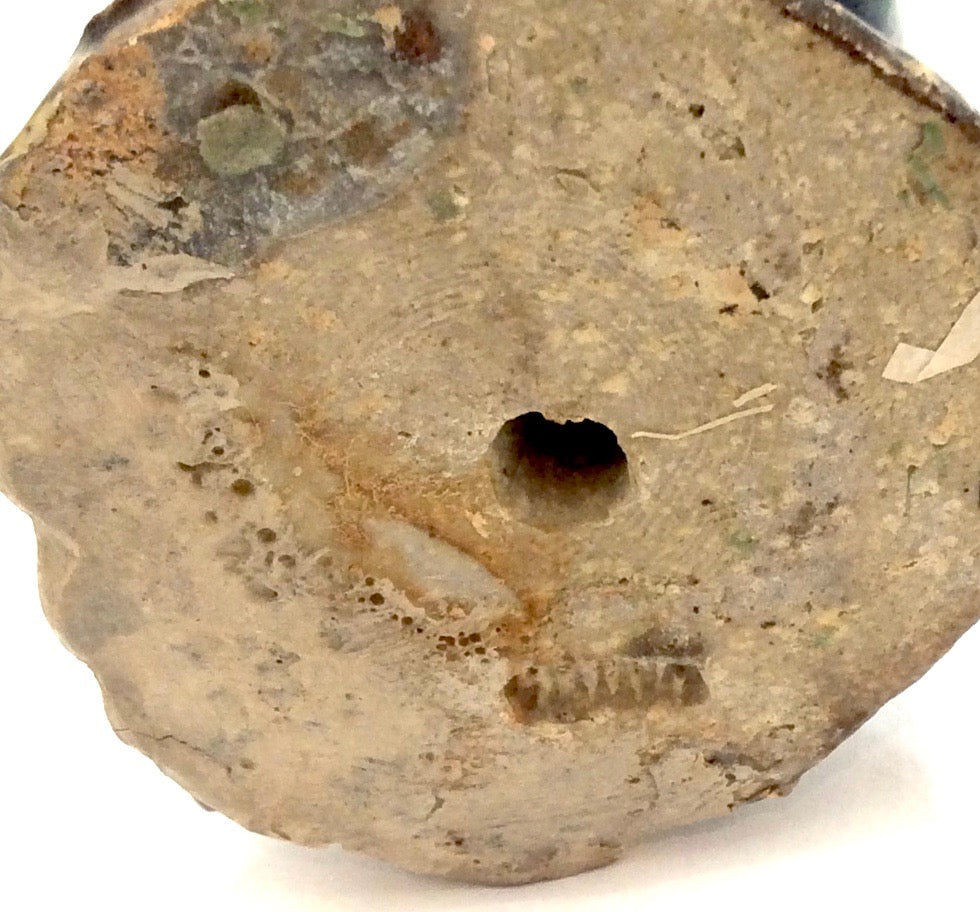
Antique Chinese Republic Shiwan (Shekwan) Pottery | Amah and Child
All our items ship free in the US
Dimensions: 2-0”w x 4-3/4”h
Shown is a wonderful mud figure representing a caregiving tradition showing an Amah, (nanny), going to town to shop. She is carrying a baby and has a nicely fashioned umbrella, to provide shelter, should it rain. The glazes are standard for Shiwan ware, utilizing blue, green, brown, and yellow ochre. The detailing is quite, intricate showing body features, (baby’s foot is hanging out of the carrier). The piece has an impressed seal “CHINA” on the bottom indicating this piece was made between 1890-1919. This piece was purchased in a small town located in Guangdong province, China in 1985 from a scholar who specialized in the history and folklore embodied in Shiwan ware.
The carrier or sling in China was known as Mei Tai, and was simply a piece of square or rectangular fabric. The panel is generally the aesthetic and symbolic focus of the whole baby carrier. Baby carriers are customarily embellished with designs and decorations through the use of a broad range of embroidery techniques. Silk, often hand spun, is usually used for the fine embroidery, as represented on this mud figure. The foundation materials can be silk, cotton, hemp or flax.
The custom of carrying a baby on either the Amah's, (household aid), an extended family member, or farm laborers back developed when a mother had to continue to do her house work or farming work without leaving the baby alone on bed or crawl around the house. Baby carriers are ideal for busy parents and for babies love to be close to their Mothers. Traditional working mothers who had to attend to their young babies, lead to a new division of labor between men and women.
Antique Condition: This piece has beautiful glazing in excellent condition: no chips or missing elements or repairs. “As is” and retains the original craft/workmanship. Any discoloration, chipping/cracking, surface wear or structural damage noted.
NOTE: Overview and Characteristics of Shiwan Art Pottery
As an important part of Chinese traditional culture, ceramic wares have a long history reflecting the customs of this ancient culture. One of the most famous types of ceramic works is called Shiwan (Shekwan) ware, which has been the shining star in Chinese folk ceramic art as early as the Tang and Song Dynasties (618-906AD), and which flourished in the Ming and Qing dynasties.
Chinese classical Shiwan ware is a type of traditional pottery that comes from the talented artists of a small town located in the south of China called Shiwan, in Foshan City, famous for its culture and pottery. Here craftsmen are well-known for their glazing techniques and unique forms. All the sculptural work is hand-formed, and sometimes involves numerous family members within a village, while directed by a master craftsman, every object is unique, and therefore, a limited edition, which attracts art collectors the world over. The three largest collections of Shiwan Art Pottery are housed in the Hong Kong Fung Ping Shan Museum, and the Chinese Cultural Centre in San Francisco.
Original Shiwan figurines, (1880-1940), are extremely rare because the art/craftsmanship and their delicate, fragile nature. The greater the detailing, the more likely the figure has been made by a master artist, hence the higher value. Also the larger the piece the more valuable, (8-0” or pieces over 20.0” tall) are extremely rare. The age of Shiwan ware can be verified by the markings, or lack of markings, the fact that they are hand-formed, depicting highly expressive figural forms and vivid imagery; primitive in sculpting techniques; the decorative elements associated with the figure; the deep rich glazes infused with the piece; the type of regional clay (sandy, course clay is the oldest), and the stylistic differences. Finally, pieces signed or stamped by the artist/craftsman are rare. The oldest Shiwan pieces, prior to 1890, will not have a signature or stamp.
DO NOT CONFUSE MUDMEN / MUD FIGURES WITH SHIWAN WARE! This unique artistic style made Shiwan ceramics extraordinarily splendid, (not to be confused with the export mud men, which were smaller figures made of mud-like clay forced into a mold and/or finger-formed, and used as decorative additions to in bonsai, planters and aquariums). These lack the expression, detail, and individuality of their glazed handmade counterparts). © 2019 — Vermillion Publishing
Return Policy
Our antique/vintage pieces are identified/described and professionally photographed, and considered, “as is”, therefore all sales are final. Read our full refund and return policy.

